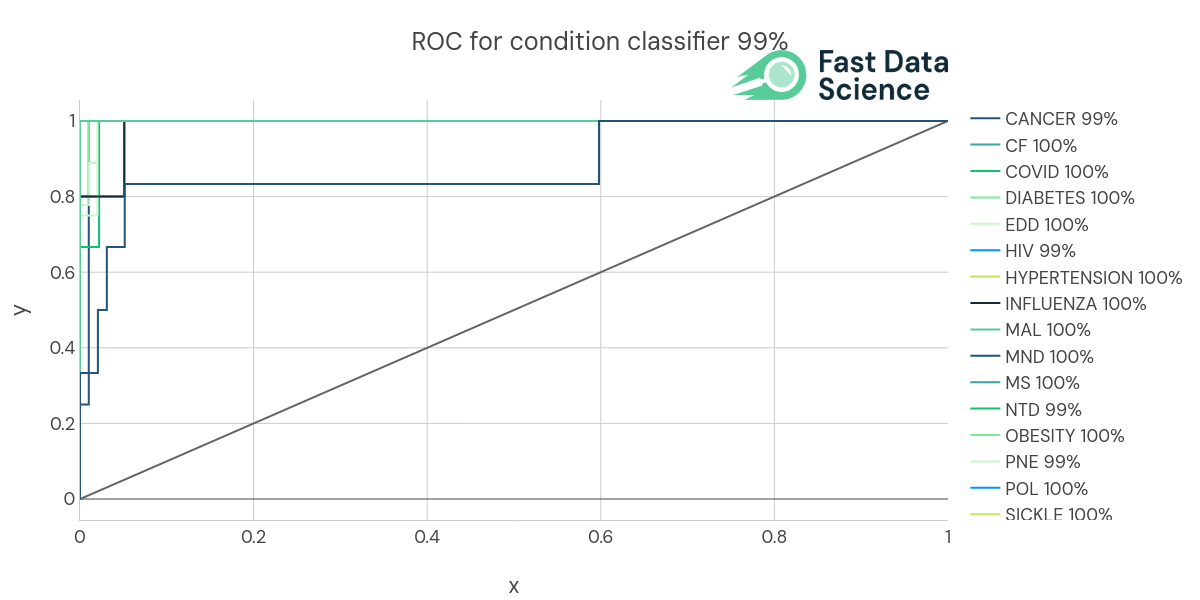
This post originally appeared on Fast Data Science’s blog on LinkedIn.
Clinical trial protocols are often long, detailed documents—sometimes 200 pages—filled with vital information about sample size, treatment methods, and statistical plans. These protocols ensure the effective conduct of trials, but their complexity increases the time needed for manual reviews and the risk of human error.
This is where Natural Language Processing (NLP) steps in. NLP enables machines to “read” unstructured data, such as clinical trial protocols, and extract key insights. By turning complex text into structured data, NLP makes it possible to perform detailed risk assessments quickly and accurately.
In the pharmaceutical industry, NLP is revolutionising processes, from pre-clinical research to protocol reviews and aftermarket monitoring. One such innovative application is the Clinical Trial Risk Tool, a powerful solution designed by Fast Data Science to simplify risk assessment and cost prediction.
When assessing clinical trial risks, the Clinical Trial Risk Tool uses a machine learning model to categorise protocols as High, Medium, or Low risk of ending uninformatively. But what does this mean?
Here’s how the tool works:
High Risk: Protocols with major design flaws, such as missing statistical analysis plans (SAPs) or insufficient sample sizes, increasing the likelihood of an inconclusive trial.
Medium Risk: Protocols that meet some key requirements but may have areas of concern, such as complex trial sites or unconventional endpoints.
Low Risk: Well-structured protocols that are adequately powered, have completed SAPs, and align with best practices.
The tool’s risk scoring formula (0–100) evaluates key features like:
Number of participants and study arms
Countries involved in the trial
Use of randomisation and simulations for sample size calculation
By automating this process, the tool enables more consistent, objective risk assessments, reducing human subjectivity.
The Clinical Trial Risk Tool initially supported trials for Tuberculosis (TB) and HIV, but it has since expanded to cover other critical disease areas, such as:
Oncology: Cancer trials often have complex multi-site designs and multiple endpoints, making risk assessment crucial.
COVID-19: Given the urgency of developing vaccines and treatments, this tool has been used to assess trials under accelerated timelines.
Neglected Tropical Diseases (NTDs): These trials often occur in low- and middle-income countries (LMICs), where limited resources make efficient protocol design essential.
For example, a pharmaceutical company conducting an oncology trial used the Clinical Trial Risk Tool to flag that its protocol lacked a clear effect estimate and had an overly ambitious sample size. This allowed the team to revise its design and prevent delays.
Whether you’re a pharmaceutical company, a funding organisation, or a regulatory body, the Clinical Trial Risk Tool offers several key benefits:
Improved Accuracy: The tool uses NLP to analyse clinical trial protocols, ensuring no crucial details are overlooked and providing data-driven insights to reduce the risk of human error.
Faster Protocol Reviews: The drag-and-drop PDF upload feature enables non-technical users to upload documents and receive a risk score in minutes, reducing review times by up to 50%.
Better Cost Prediction: The tool identifies cost-driving factors such as sample size, study visits, and trial site complexity, helping stakeholders optimise trial budgets.
Consistency: With its structured scoring system, the tool provides consistent evaluations across multiple trials, ensuring fairness and transparency.
The Clinical Trial Risk Tool is not just a time-saver—it’s a game-changer for clinical trial planning and optimisation. By harnessing the power of AI and NLP, you can improve protocol design, prevent costly delays, and ensure your trials deliver informative results.
Ready to see how it works?
🔗 Try the Clinical Trial Risk Tool today: Click here to get started
Want a guided walkthrough?
🎥 Watch this short demo: How to Use the Clinical Trial Risk Tool
Don’t let uninformative trials slow down your research—leverage AI-driven insights to make smarter, faster decisions.
#ClinicalTrials #NLP #AIInPharma #ClinicalResearch #RiskAssessment

Introduction People have asked us often, how was the Clinical Trial Risk Tool trained? Does it just throw documents into ChatGPT? Or conversely, is it just an expert system, where we have painstakingly crafted keyword matching rules to look for important snippets of information in unstructured documents? Most of the tool is built using machine learning techniques. We either hand-annotated training data, or took training data from public sources. How We Trained the Models inside the Clinical Trial Risk Tool The different models inside the Clinical Trial Risk tool have been trained on real data, mostly taken from clinical trial repositories such as clinicaltrials.

Over the years, the overall cost of the drug development process has been exponentially increasing, prompting the adoption and use of adaptive clinical trial design software. Though there are practical difficulties and barriers in implementing clinical trial solutions, these problems are adequately addressed to overcome these issues as they arise. With advancements in software technologies, further improvements are being made to the software’s adaptive clinical trial design. Despite these progresses, just only a handful of well-established software with various types of clinical trial adaptations is currently available.

A clinical trial protocol is a document which serves as the step-by-step playbook for running the trial. The clinical trial protocol guides the study researchers to run the clinical trial effectively within a stipulated period. The prime focus of the clinical trial protocol is to ensure patients’ safety and data security. [1, 2] As the clinical trial protocol is an essential document for the seamless execution of the clinical trial, reviewing (peer-reviewing) the protocol is essential to ensure the scientific validity/viability/quality of the protocol.